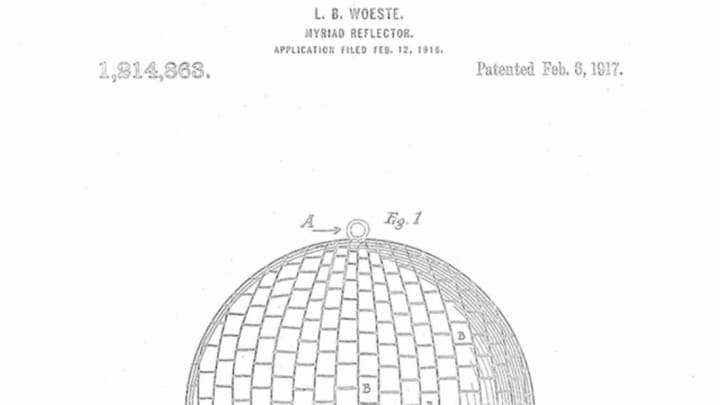"The Myriad Reflector": The Early, Forgotten Disco Ball
By Erika Berlin

People were getting down on the dance floor under the glittery light of disco balls long before their '70s heyday (and decades before they became permanently referred to as such). Back in 1917, Louis Bernard Woeste of Newport, Ky. filed a patent for a Myriad Reflector. It wasn’t the first mirrored ball ever, but Woeste was the only one to stake a claim with an official patent. His company, Stephens & Woeste, started advertising their creation. One ad, which appeared in a 1922 Electrical Merchandising bulletin, read:
The newest novelty is one that will change a hall into a brilliant fairyland of flashing, changing, living colors—a place of a million colored sparks, darting and dancing, chasing one another into every nook and corner—filling the hall with dancing fireflies of a thousand hues.
Sales literature on kaycorney.com
Stephens & Woeste sold their 27-inch "magnificent globe," which was covered with "more than 1200 special-made mirrors," to ballrooms, dance halls, and skating rinks. Jazz and other nightclubs in the 1920s were known to feature mirror balls, and their "'dizzy' effect" when rotating under spotlights was hailed for its "novel lighting effect" in a 1921 copy of Illustrated World. "No, this is not a photograph of the heavens, the Milky Way, or a new constellation," the magazine teased of a picture of the illuminated mirror ball. "It was made at a dance palace in Dayton, Ohio."
The Cincinnati-based Stephens & Woeste, which had been renamed Myriad Reflector Company, astutely advertised in Billboard magazine (then a general-interest amusement publication). But eventually, the "Myriad Reflector" faded from the limelight, and the mass-production of hanging mirror balls was taken over by a company in Louisville, Ky. just in time for the disco era.